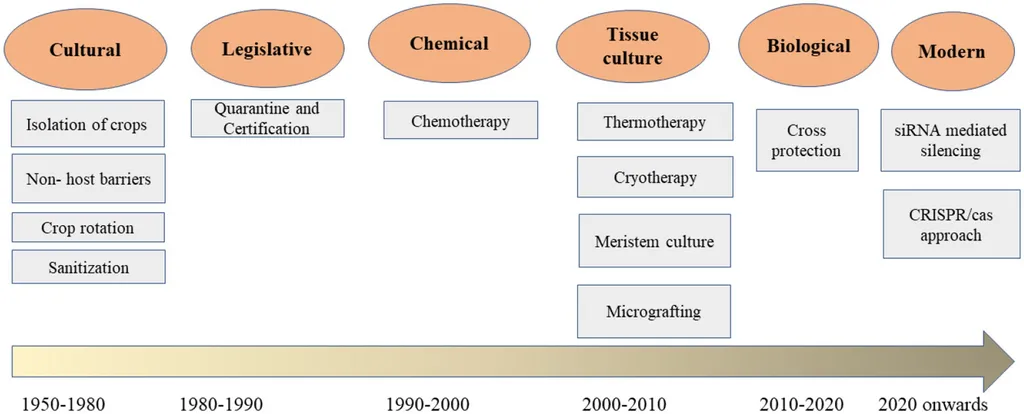In the heart of Iran’s apple orchards, a silent battle rages, not against pests or weather, but against an array of viruses and viroids threatening the country’s oldest cultivated fruit crop. A recent study, led by Anahita Hamedi from the Department of Plant Protection at the Islamic Azad University in Tehran, has cast a spotlight on this hidden world, offering insights that could reshape apple cultivation and potentially other fruit industries.
The study, published in the journal ‘Viruses’ (which translates to ‘Viruses’ in English), began with a simple yet comprehensive approach: collecting 170 apple leaf samples from various commercial cultivars across Iran. The initial screening targeted seven known pathogens using RT-PCR, a common molecular technique. However, the real innovation lay in the use of next-generation sequencing (NGS) to delve deeper into the virome of apple trees.
“We wanted to go beyond the known suspects and uncover any additional or novel agents that might be lurking in these trees,” Hamedi explained. This approach paid off, revealing three previously undetected pathogens in Iranian apple trees: citrus concave gum-associated virus (CCGaV), apple hammerhead viroid (AHVd), and apricot vein clearing-associated virus (AVCaV). Notably, this is the first global report of AVCaV in a non-Prunus host, expanding our understanding of its range.
The findings paint a complex picture of apple mosaic disease in Iran. The most prevalent pathogen was apple green crinkle-associated virus (AGCaV) at 47.6%, followed closely by apple chlorotic leaf spot virus (ACLSV) at 45.8%. Mixed infections were rampant, occurring in 67% of samples, which could complicate disease management strategies.
Phylogenetic analysis suggested a common origin for the Iranian isolates, clustering them together based on specific genes and full genomes. This information could be crucial for tracking the spread and evolution of these pathogens.
The commercial implications of this research are significant. Understanding the full spectrum of pathogens affecting apple trees enables more targeted and effective disease management strategies. It also underscores the importance of regular monitoring and sanitation practices to prevent the spread of these pathogens.
Looking ahead, this study sets a precedent for comprehensive virome profiling in other fruit crops. As Hamedi puts it, “This is just the beginning. The tools and methods we’ve used can be applied to other crops, helping us stay one step ahead of these invisible foes.”
The research also highlights the value of combining traditional detection methods with advanced technologies like NGS. This synergy not only enhances our understanding of plant diseases but also paves the way for innovative solutions to safeguard our agricultural industries.
In an era where climate change and global trade are reshaping the agricultural landscape, such studies are more important than ever. They equip us with the knowledge to protect our crops, ensuring food security and economic stability. As we continue to unravel the complexities of plant viromes, we edge closer to a future where diseases like apple mosaic are no longer a threat but a challenge met with confidence and expertise.

